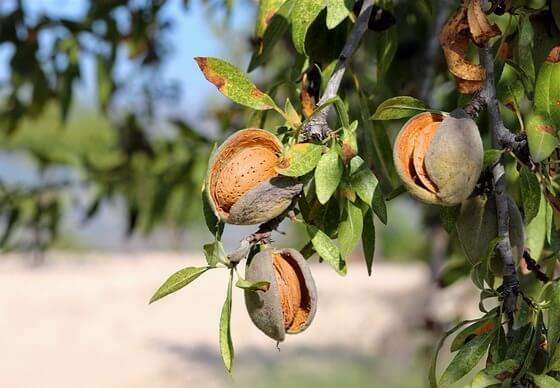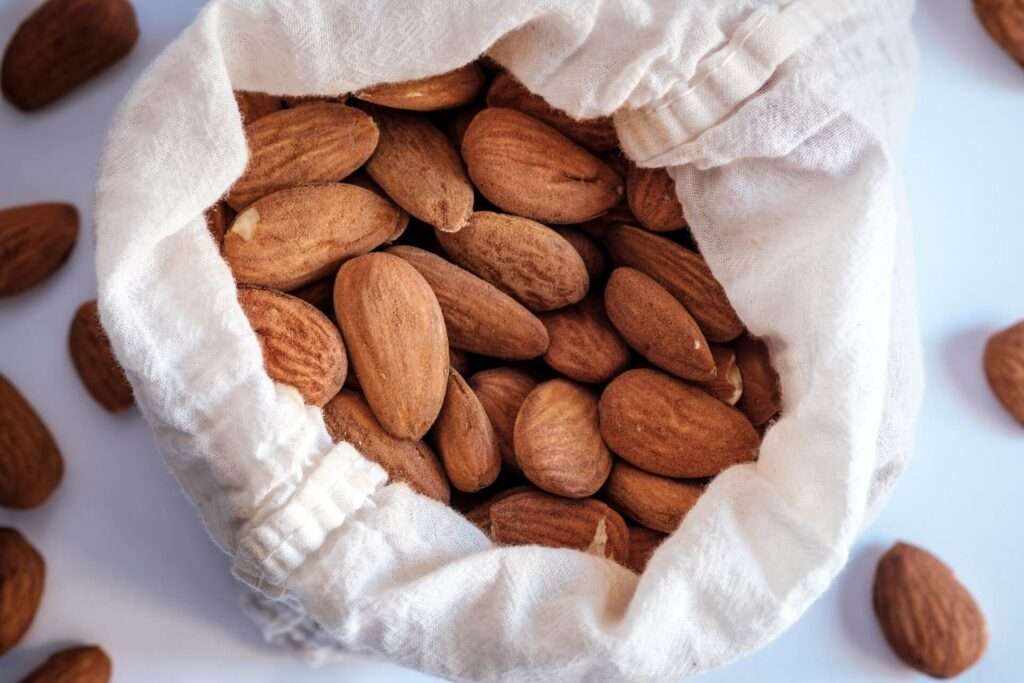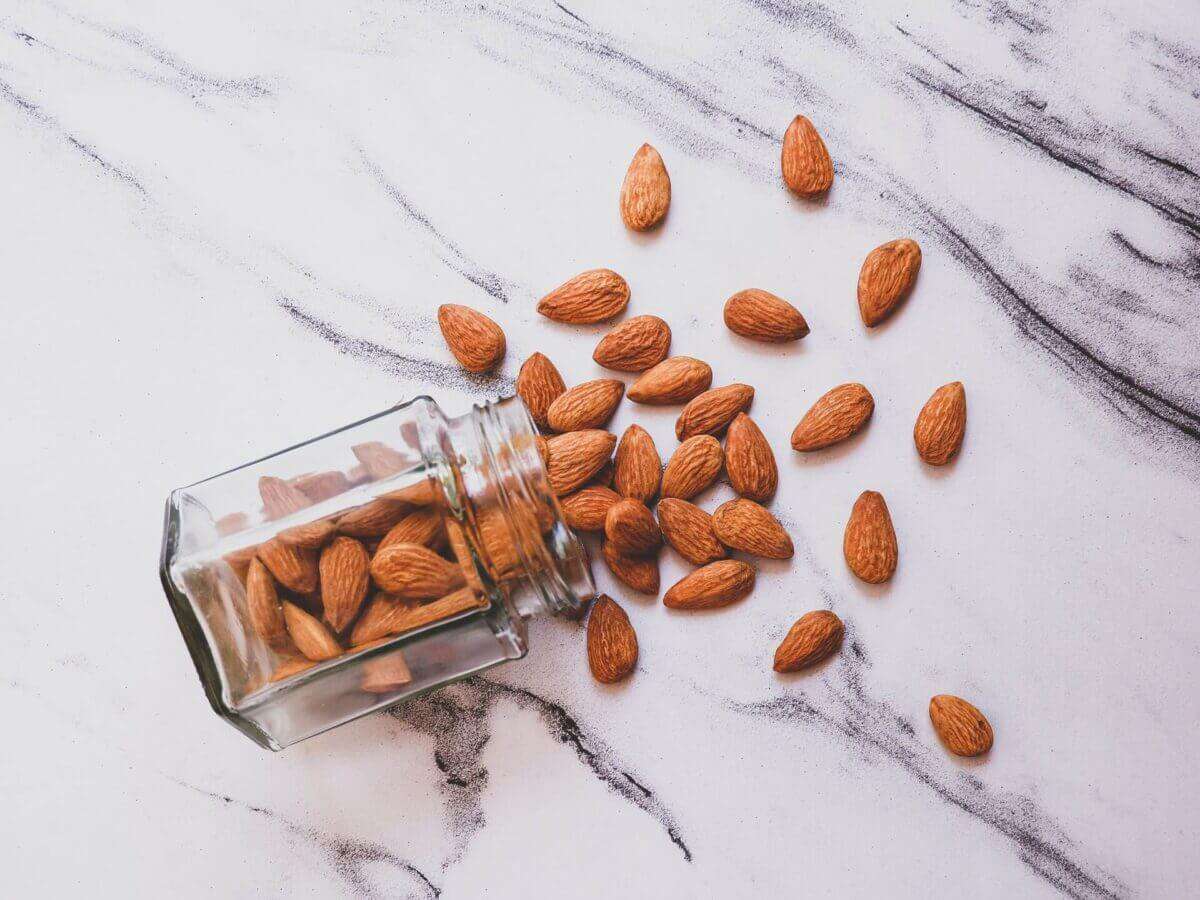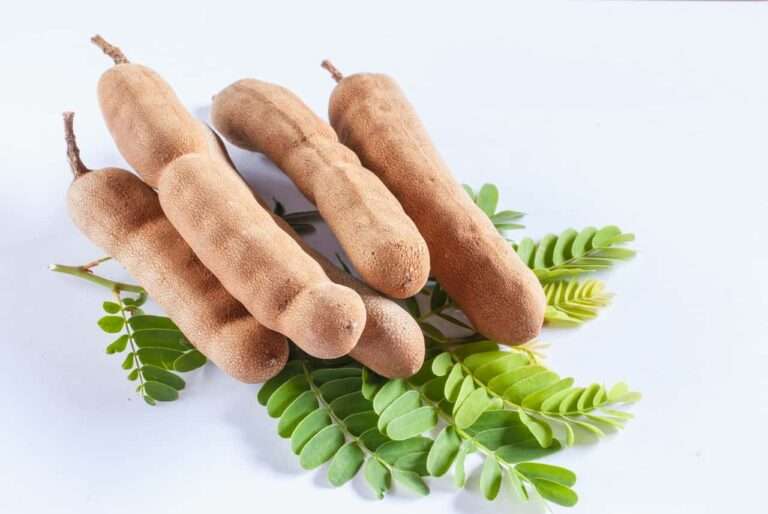35 best almond food facts you need to know
Did you know that almonds aren’t exactly nuts? Is almond a fruit or a nut?
- Almonds produce a fruit known as a drupe, which consists of an outer hull and a tough shell around the seed, which is related to peaches. Despite its name, an almond is not a genuine nut. Almonds and peaches are so closely related that farmers regularly implant almonds onto the root systems of peaches and other stone fruits nowadays.
- Almonds come from a kind of tree that is indigenous to Iran and the nations that surround it, including the Levant. The seed of this tree, which is edible and is grown commercially in large quantities, is also known as an almond.
- You may get almonds with or without the shell on them. Almonds that have been blanched have had their shells removed and have been subjected to hot water in order to soften the seed coat, which is then peeled off in order to expose the white embryo. After being washed and sorted, almonds are ready for storage for an extended period of time.
- In addition to being included in a wide variety of cuisines, almonds are often the star ingredient in sweet treats, such as marzipan and blondies.

Almond nutrition and health benefits facts
- Antioxidant properties may be found in abundance in almonds. Antioxidants are helpful in protecting against oxidative stress, which may cause molecular damage in your cells and lead to inflammation, ageing, and illnesses such as cancer. Antioxidants can also help guard against free radicals. The brown outer layer of an almond’s skin is where the majority of the fruit’s potent antioxidants are concentrated.
- In terms of vitamin E content, almonds are among the highest in the food industry. Consuming a diet rich in vitamin E-containing foods has been associated with a variety of health advantages, including the reduction of the risk of developing diseases such as cancer and Alzheimer’s.
- Magnesium is a mineral that many people don’t get enough of, yet almonds are very rich in it. Significant improvements in metabolic syndrome and type 2 diabetes may result from high magnesium consumption. When taking magnesium supplements, people without diabetes also see significant improvements in insulin resistance.
- Almonds’ magnesium content may also contribute to a reduction in blood pressure. One of the main causes of heart attacks, strokes, and renal failure is high blood pressure. Whether you are overweight or not, a lack of magnesium is closely connected to high blood pressure.
- Oxidation of “bad” LDL cholesterol is a key stage in the progression of heart disease and may occur at any point along the process. Eating one or two handfuls of almonds on a daily basis has the potential to result in minor decreases in “bad” LDL cholesterol, which in turn has the potential to reduce the risk of developing cardiovascular disease.
- Nuts are a good source of protein and fibre, but they don’t contain many carbohydrates. According to a number of studies, consuming nuts like almonds and other varieties might make you feel fuller and therefore help you consume fewer calories overall.
- Although almonds have a high calorie count, research shows that consuming them does not lead to increased body fat. There are even studies that imply the contrary, suggesting that almonds may really help people shed extra pounds.
100g almonds has 578 calories (2418kj), 21g protein, 51g fat, and 20g carbs, including 12g fibre

How to store almonds and how to buy them
- When you go to the store to purchase almonds, you’ll discover that they are packaged in a number of various ways. To begin, they may be purchased either in their natural state or already shelled. They may be eaten raw, roasted, or blanched if the shells are removed. If the almonds are eaten raw or roasted, they will still have their skins on them; but, if they are blanched, the skins will be removed.
- Almonds, both raw and blanched, may be purchased in a number of different forms, including whole, sliced, slivered or half, diced or chopped. The pre-cut almonds are good for a recipe since they can be added quickly and effortlessly, making them suitable for a busy chef. However, in order to get the most taste out of your almonds, you should buy them whole and then cut or slice them just before each usage.
- Raw almonds are rich in oils, and as you may be aware, oils tend to grow rancid when improperly kept. Therefore, you must ensure that the almonds are not exposed to heat, temperature fluctuations, or moisture. Almonds should be kept at cool temperatures, preferably in the refrigerator or freezer.
- We don’t need to worry about temperature requirements since the refrigerator or freezer take care of it. We only need to cover moisture and strong odours. With the right bundle, you can cross both of them off your to-do list. It’s acceptable as long as the original packaging remains properly sealed. When you open a resealable container, you may use it again. The almonds may either be kept at room temperature in an airtight container or frozen in a Ziploc bag.
- You should be sure to follow the recommendations on the label about the proper storage of snack almonds, which are often roasted almonds that have been seasoned. The vast majority of the time, you can keep them at room temperature. To begin, make sure that the container is always kept closed while it is not being used. After opening the packaging, just like you would do with raw almonds, you should move the nuts to another container that can be sealed again.
- Let’s begin with uncooked almonds, shall we? If you take the right precautions, you should be able to keep them for at least a year, and maybe much longer. The date that is printed on the packaging is an excellent place to begin when determining the freshness of unopened snack almonds and other similar products. The snacks won’t go bad even after a day or a week have passed since the expiration date, but their quality will decline with time. And at some time, you’ll find that the flavour is completely different from what you’re accustomed to.
- To determine if raw almonds have gone bad, check for the typical indicators of decomposition, such as mould or black flecks. The second step is to take a deep sniff. If the nuts smell like rancid oil, then they are spoiled and should be discarded. The last action you may do is to offer them a sample. If they have acquired a bitter taste, it is up to you whether to retain or discard them for quality reasons.

Cooking techniques, secrets, and tips from the kitchen
- Toasting almonds takes just minutes but results in an intensity of taste and scent that enriches practically any dish or application, even as a snack straight out of hand. The texture of the nuts also improves from the soapy, slightly mushy bite of the frequently available to a toothier one that stays crisp even in baked items. Toasting almonds may help prevent them from sinking to the bottom of a cake or bread batter.
- To pan-roast almonds, spread them out in a single layer in a dry pan made of cast iron or heavy stainless steel. Stir or toss them often as they cook over medium heat until they turn golden brown and start to smell nutty. About three to five minutes should be enough time for whole almonds. Watch them carefully because nuts that are toasted in a skillet can burn quickly where they touch the pan. They keep getting darker for a few minutes after you take them off the heat, so take them out of the hot pan to cool.
- How to toast almonds in the oven? Preheat the oven to 350 F. Spread the almonds in a single layer on a parchment paper-lined cookie sheet with a rim. Toast them for five to ten minutes, shaking the pan a few times to move the nuts around so they all get the same colour. Just before they turn golden brown and smell good, take them out of the oven and lift the parchment paper to move them to a cutting board or a dish to cool.
- Half a cup of almonds can be toasted in the microwave. Spread the nuts in a single layer on a paper towel-lined plate that can go in the microwave. About 1/2 teaspoon of melted butter or vegetable oil can be poured over the almonds to help them brown faster. Toss them so that they are all evenly coated, and then spread them back out in a single layer. You can also toast them without adding any fat, but they won’t get as golden brown this way. Cook the nuts for one minute on high power, stir, and cook for another minute until the nuts are golden brown and smell good. Depending on how strong your microwave is, it could take anywhere from three to five minutes to do everything.
- Almonds have usually been a big part of many traditional recipes, whether they are used whole, flaked, diced, or crushed into almond meal or almond flour, which is naturally gluten-free. Some of the most popular are baked goods like Bakewell tarts, Dundee cakes, and mince pies. There are a lot of different ways to make an almond cake. As a base, ground almonds and icing sugar are used to make marzipan.
- Almonds may be found in a wide range of preparations, including soups, main courses, and desserts, and are often used in Asian cuisine. It may be found in a wide variety of curry dishes as well as curry-based recipes.
- Smoothies can be made with whole almonds if the mixer is powerful enough, but almond butter is much simpler to work with and may be added to almost any smoothie recipe. In addition to providing nutrients such as vitamins, minerals, antioxidants, and additional protein, almonds contain a healthy fat that is beneficial to your health and helps to increase the absorption of antioxidants from the fruit in your drink. This is something that is good for your health and is beneficial for your overall wellbeing.
- Making almond milk at home on your own is a simple process. Put 100g of whole almonds in a container, cover them with cold water, and let them soak for the night. After rinsing, place it in a blender along with 400 millilitres of cold water and process for two to three minutes. The mixture should be strained into a basin using a fine sieve lined with muslin. Repeat this process until all of the milk has been removed from the muslin. Keep it in the refrigerator, and use it just as you would regular milk. If you store your homemade milk in the refrigerator, it will keep for about three to four days.
- They are delicious when combined with a wide variety of fruits, including apple, apricots, bananas, caramel, cherries, coffee, figs, honey, oranges, peaches, pears, and plums. The flavours of coffee, honey, oats, and sesame go particularly well with almonds.

History of almonds from the beginning until today
- Almonds are believed to have originated in the western regions of Asia and China, where they were most likely farmed. Despite the fact that the precise location of domestication has been lost to time, experts have been able to pinpoint Western Asia as the most probable location where they were originally produced. Wild almonds are still natural and flourish in modern-day Iran and its adjacent nations, where they have survived for centuries.
- People ultimately introduced the almond around the Mediterranean coastlines, both in Southern Europe and Northern Africa, and it has more recently been introduced to other regions of the globe, most notably California in the United States, according to historical records.
- Experts believe that almonds were one of the earliest plants to be domesticated since farmed almonds first emerged in Numeira, Jordan, during the Early Bronze Age (ca. 3000–2000 BCE). Almonds were even discovered in Tutankhamen’s tomb in Egypt (about 1325 BCE), which is a testament to their popularity.
- Ground almonds were used as a portable, primitive bar component by nomadic cultures more than 4,000 years ago, much as we enjoy them now for their high protein and fat content as well as their vitamin E, calcium, magnesium, and potassium content. Also mentioned often in the Bible is the almond, which is referred to as one of “the greatest fruits of the land” in the Old Testament and whose early-flowering blooms symbolise hope.
- Despite the fact that almond milk is considered a recent trend, it was immensely popular among the elite classes throughout the high and late Middle Ages, particularly in Europe. Most European Christians followed an edict from the Didache, an early Christian book, which forbade the use of animal products on certain days (approximately between 1000 and 1500 A.D.).
- Almond milk quickly gained popularity as a substitute, and it finally became a staple culinary component. Despite the fact that almond milk appears in practically every mediaeval cookbook, including in recipes that call for meat and other animal ingredients, this suggests that its usage extended much beyond the initial two-days-a-week restriction.
- Today, the state of California is the world’s leading producer of almonds, accounting for around 80 percent of the world’s total production. California’s almonds are the state’s most valuable agricultural export and the state’s most productive tree nut crop, both in terms of overall cash value and area. They are also the most important specialty crop exported from the United States.






